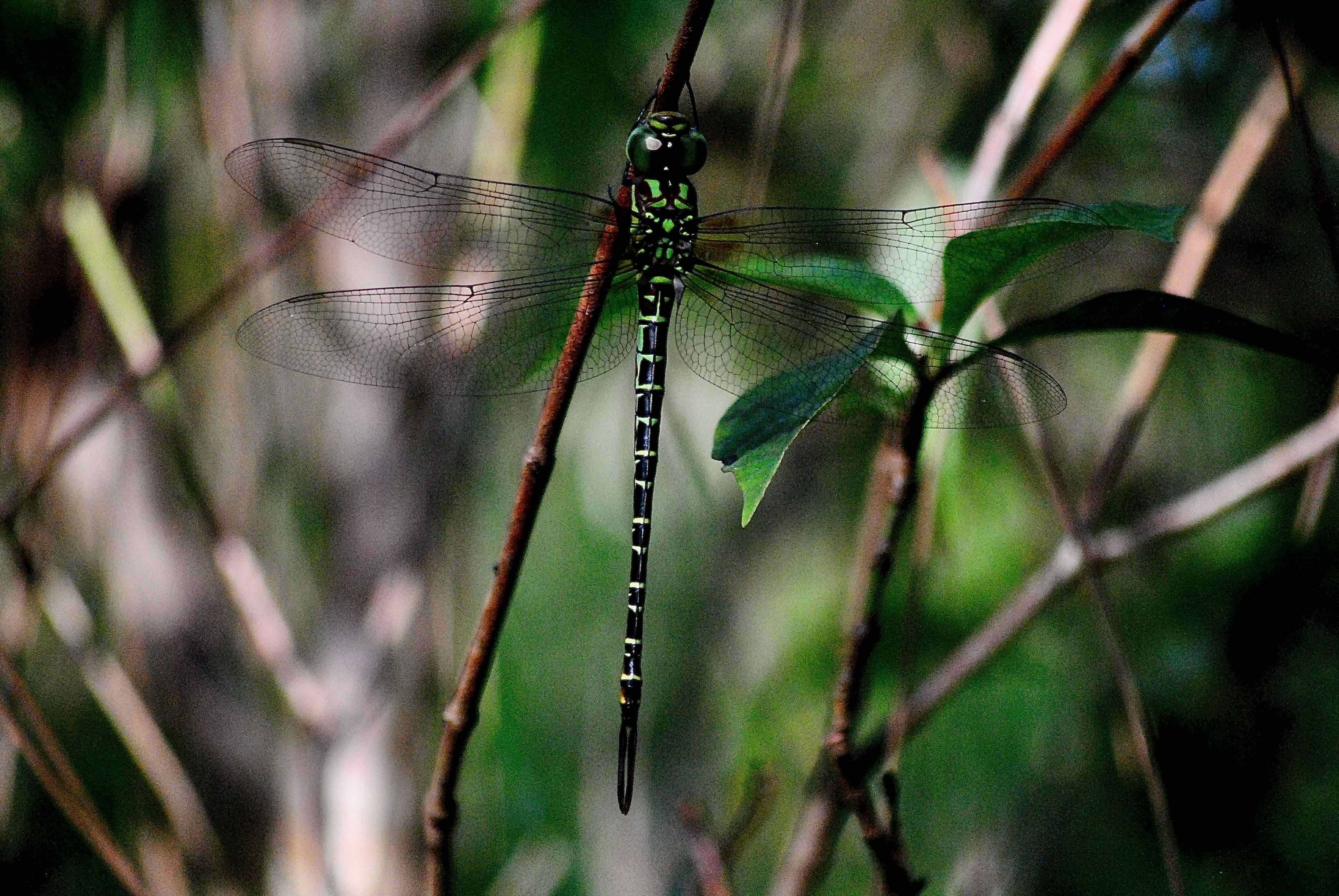
Regal darner dragonfly, photographed at the Helene Klein Pineland Natural Area, Coconut Creek, Broward County, in June 2014.
Think of the regal darner, Coryphaeschna ingens, as the answer to a riddle: which dragonfly is both one of the easiest and one of the most difficult to identify? So how can it be two very different things at one time?
The answer lies in the regal’s habits and its close resemblance to a cousin, the swamp darner, aka Epiaeschna heros.
Regal darners, Florida natives, are strong and skillful aviators, and tend to fly at tree-top level. They also rarely perch. Combine the two and it’s tough to get anything more than a quick peek at one. And if you do get that glance you run into this: the regal and and the swamp darner are the same size and share the same color pattern on their thorax, only in reverse.
The thorax, or middle section, of the regal darner is brown with green stripes, while the thorax of swamp is green with brown stripes. So when you get that glance, you think, am I seeing green on brown or brown on green? Hmmm.
On the other hand, if you can get a photo of what you see, making the correct ID becomes easy. So there you have it, a dragonfly that’s at once both easy and difficult to identify.
Regal darners are considered rare as dragonflies go, but that might be due to the difficulties in confirming sightings, which makes it difficult to collect good data. Rare or not, the overall population seems to be stable.
The range of the regal extends from one or two counties in southeastern Virginia, south through the Carolinas, Georgia and Florida, westward to Texas and Oklahoma. It’s most commonly seen in the Sunshine State, less so elsewhere. In fact the last confirmed sighting of a regal darner in Virginia apparently dates back to 1975 in Southampton County. There might have been more recent sightings in Northampton County, but they aren’t confirmed. (This is according to state data as of June 2023.)
It’s also found in Cuba and the Bahamas as well.
Regal darners are large dragonflies, going between three and three-and-a-half inches in length, with green eyes, the aforementioned green stripes on an otherwise brown thorax and green bands on the abdomen (the last of the insect’s three sections). One twist: the eyes on females turn blue as they mature. (Our friend the swamp darner also has blue eyes and a series of single and double brown bands on the abdomen, another trait that makes it easy to discern it from the regal darner, if you have a photo.)
Regal darners prefer wet habitats surrounded by heavy vegetation — marshes, swamps, lakes, ponds and slow-moving streams. They tend to be found in areas along the coastal plain, but have been spotted occasionally farther inland and at higher elevations.
Like dragonflies generally, regal darners are carnivores as both larvae and adults. The males often feed in swarms, flying close to vegetation in order to flush out their prey. However, they don’t patrol or defend a territory. Regal darners also tend to be more active at dusk.
Regal darners are one of three North American members of the genus Coryphaeschna. The species name, ingens, is Latin for remarkable or large.
They are members of Aschnidae, the darner family.
